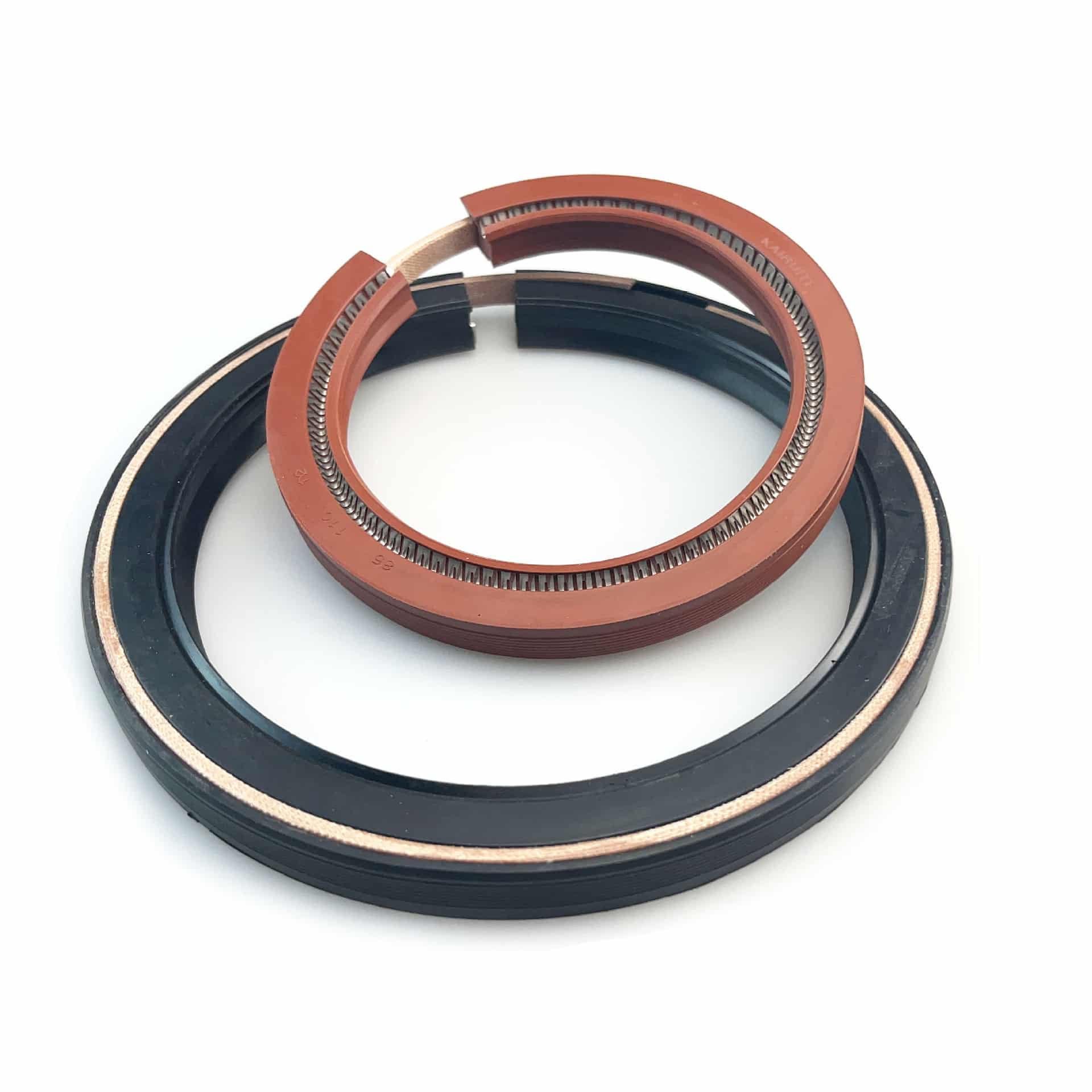Noticed oil puddles under your car or stains near the engine? It might be a leaking crankshaft oil seal—a small part that can cause major engine problems if ignored.
Crankshaft oil seals play a crucial role in keeping oil inside the engine while blocking dirt and debris from entering. But with constant heat and rotation, they eventually wear out.

In this guide, I’ll explain what crankshaft seals do, how to recognize failure signs, when to replace front vs rear seals, and how to select the right aftermarket replacement.
What does a crankshaft oil seal do?
A crankshaft oil seal is a rubber or polymer ring located at either end of the crankshaft. It prevents oil from escaping the crankcase while allowing the crankshaft to rotate freely.
| Type | Location | Description |
|---|---|---|
| Front Crankshaft Seal | Near timing cover | Seals rotating shaft at pulley end |
| Rear Main Seal | Between engine & gearbox | Seals crankshaft at transmission end |
Both are critical to engine performance. At Hengoseal, we supply crankshaft seals in NBR and FKM, designed to meet or exceed OEM standards.
Looking for a reliable fit? Try our TOYOTA crankshaft oil seal options or read our TOYOTA Oil Seal Replacement Guide for application tips.
What are the symptoms of a bad crankshaft seal?
A worn or broken crankshaft oil seal often shows signs that shouldn’t be ignored:
- Oil dripping from the front or rear of the engine
- Dark oil stains under the car or near the bell housing
- Smell of burning oil while driving
- Visible oil on the crankshaft pulley or flywheel
- Gradual decrease in oil levels
- Increased engine vibration or noise
Catching these early can prevent transmission removal if the rear main seal is the issue.
How do you replace a crankshaft oil seal?
Here’s what you need for a basic replacement:
Tools:
- Pulley puller or flywheel tool
- Seal puller or flat-head screwdriver
- Oil seal installer or mallet
- Socket set, rags, sealant
Steps:
- Disconnect battery and drain oil
- Remove the pulley (front) or transmission (rear)
- Extract the old seal carefully
- Clean and inspect the seal groove
- Lubricate and press the new seal evenly
- Reinstall components
- Add new oil and check for leaks
If it’s the rear main seal, consider getting help—transmission removal is tricky. Need part confirmation? Our oil seal cross reference chart helps identify correct replacements.
Can I use aftermarket crankshaft oil seals?
Yes. In fact, aftermarket seals like ours offer premium features at a better price:
- OEM-level precision fit
- FKM (heat-resistant) and NBR (cost-effective) materials
- Models compatible with TOYOTA, HONDA, NISSAN, etc.
- Support for small batch and bulk orders
We also have a Skeleton Oil Seal Guide to explain seal structure and performance.
Should you replace both crankshaft seals at once?
Only if you're already doing major engine work.
Replace both seals during:
- Full engine rebuilds
- Clutch or flywheel replacement
- Timing belt or chain replacement
Otherwise, it’s fine to just fix the leaking seal. For full replacements, check our MITSUBISHI crankshaft oil seals.
Not sure what fits your crankshaft? Just send your shaft size or OEM number—we’ll match it fast.
Conclusion
A faulty crankshaft oil seal can turn a small leak into a major repair. By spotting symptoms early and replacing with high-quality aftermarket seals, you’ll save time and protect your engine.
Need help with crankshaft oil seal replacement?
We stock OEM-quality seals for most brands, offer fast delivery, and support bulk orders.
📧 Email: [email protected]
📞 WhatsApp: +86 17622979498
Let us match your seal by sample, photo, or dimensions.
Related topic


